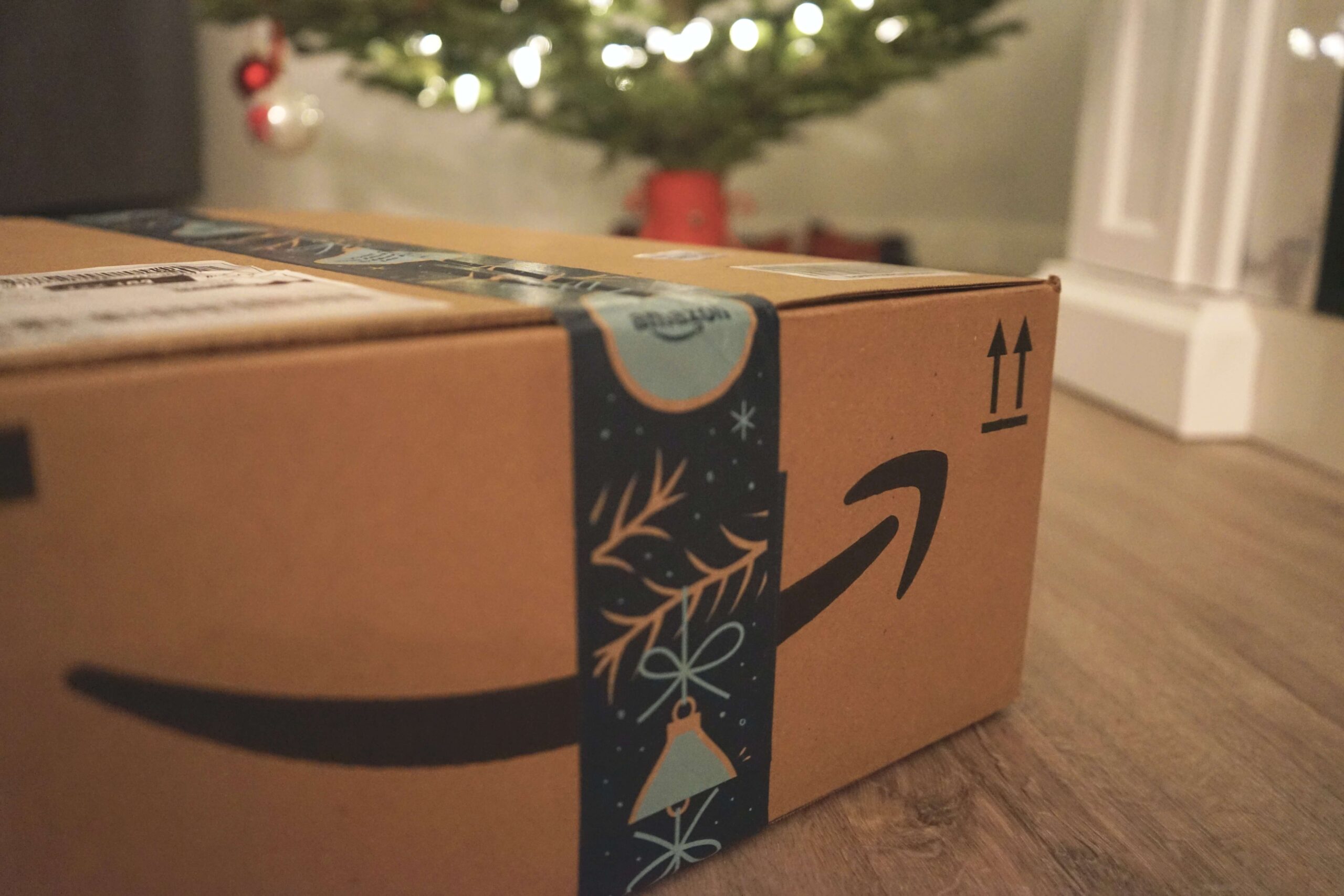How to set up business on Amazon and start selling: Amazon Seller Guide

Table of Contents
AMAZON AT THE APEX OF E-COMMERCE
Amazon has become a household name with its staggering popularity and success accelerated by including a broad range of products, excellent customer service and prompt delivery globally. Here is a compilation of essential data about Amazon in the United Kingdom:
- An average of 452.8 million visits to amazon.co.uk as of May 2021.
- A record of 579 million visits to amazon.co.uk in November 2020.
- Approximately 300,00 sellers in the UK alone.
- Nearly 90% of customers in the UK are using Amazon.
- Currently, more than 15 million shoppers are subscribed to Amazon Prime.
WHY AMAZON?
Why set up your business on Amazon?
- Secures payments: Amazon initiates payments to your bank account by electronic bank transfer. Payments are regulated every 7 days, even for pay-on-delivery.
- Pay-by-clicks advertising: Amazon charges sellers per click for their ads. Targeted ads are displayed and new customers click on them; sellers are charged accordingly by the number of clicks.
- Easy shipping: Amazon has two options, Easy-ship and Fulfillment By Amazon, for which sellers need only provide their details and Amazon manages the delivery and return of products.
- Global reach: Amazon sells in more than 100 countries, with Amazon Prime in 22 countries as of 2021. It operates in 18 international markets. Selling is not restricted only to the UK but across Europe and the country as well.
- Seller app: Amazon provides sellers with a free app to manage their business from anywhere. It removes the hindrance of having to stay on-site to monitor purchases and transactions.
Added to that, Amazon protects your brand from the impersonation of its logo, name or products. They also provide paid support from third party professionals to help beginners develop their advertising content, manage their accounts, and more.
TYPES OF SELLERS AND SELLING PROGRAMS
Before you get started, it is essential to know about the types of sellers on Amazon and the selling programs you can opt for according to which suits your business best:
1P (first-party)
Commonly referred to as first-party or Amazon Vendor Central, this is a program where Amazon personally invites merchants to enrol for the Vendor Central. If you agree to do so, Amazon creates a unique Vendor account for you. They email you a listing of the products they are interested in purchasing and the quantity they require. After the inventory is delivered to them, they pay the merchant and market and sell their products for them.
Amazon Vendor Central is an appealing option for those merchants who would like to avoid the rocky road of selecting and managing all aspects of shipping the products to their customers. However, this program is only applicable to businesses that are hand-picked by Amazon to be enlisted. Note that this means direct sales to Amazon and not to consumers.
Amazon selects your business based on:
– How good the market demand for your existing brand is.
– If you’re a trader or an exhibitionist with eye-catching products.
Typically in the UK, a vendor is also assigned an onboarding overseer to assist them for the first three months. Apparently, the Vendor Central program is still the most expensive as Amazon charges marketing, referral, packaging and pre-payment fees.
3P (third-party)
Also referred to as third-party sellers or Amazon Seller Central, these are the types of merchants directly involved with and selling to consumers. They manage the associated products and processes. Every new seller is required to start with an account of this nature and later qualify for the Amazon Vendor Program based on how well their brand does.
Sellers of this nature are free to choose their logistics resources. If they have the budget, they may manage it themselves too. They also decide the retail price of the items on sale, unlike Vendors, for whom Amazon decides the retail pricing.
Two optional subcategorized programs come under third party sellers, which are
Fulfilment by Amazon(FBA)
Sellers allow Amazon to take care of their inventory by choosing Fulfillment By Amazon. They can outsource the responsibility of packaging, storing, transportation, deliveries, returns, and exchanges to Amazon at a fixed charge. The UK currently has 21 fulfilment warehouses. Click here to learn more.
You can accelerate your sales by subscribing as a Prime seller or Seller Fulfilled Prime(SPP) as consumers favour prime stamped products. This means that Amazon grants access to transportation services provided you dispatch your products from your own warehouse. For registering as a Prime Seller, you must meet the following criteria:
- Have an Amazon Professional seller account
- Have a domestic warehouse from which to fulfil your orders
- Ship over 99% of your orders on time
- Have an order cancellation rate of less than 0.5%
- Use Amazon Buy Shipping Services for at least 98% of orders
- Deliver orders with Amazon supported Seller Fulfilled Prime carriers
- Agree to the Amazon Returns Policy
- Allow for all customer service inquiries to be dealt with by Amazon
Amazon states that FBA and SPP are complementary programs that enhance the brand’s shipping service to maximize sales opportunities.
Fulfilment By Merchant(FBM)
Fulfilment By Merchant means that the seller fulfils the warehousing, delivery, return, exchange and customer contact of their products. This is a good option if the seller is well equipped financially and preferably with more members to manage the dealings successfully.
Some sellers also opt for employing the services of a logistics company. Click here for the top 15 logistics companies in the UK.
Consider strategically distributing your products over warehouses near your consumers, as it will help you save up on shipping costs.
Not being able to Prime stamp your products and overseeing every aspect of the business makes opting for FBM challenging. However, it is beneficial if well planned because the merchant is in complete control of the business.
There is no specific category of seller that merchants can squeeze into; every program you opt for depends entirely on areas such as financial means, referral by Amazon, product nature, consumer behaviour.
PROHIBITED PRODUCT POLICY
Prohibited items vary across many regions. The following is a list of products that are not allowed to be sold on Amazon in the UK:
- Prohibited Product Claims
- Alcohol
- Animals and Animal Products
- Car & Motorbike
- Clothing
- Cosmetics
- Currency, Coins, Cash Equivalents and Gift Cards
- Drugs, Drug Paraphernalia and Dietary Supplements
- Electronics
- Food & Beverage
- Gambling & Lottery
- Hazardous and Dangerous Items
- Jewellery
- Medical Devices
- Offensive and Controversial Materials
- Other Products
- Sex & Sensuality
- Tobacco, E-Cigarettes and Related Products
- Weapons
For more information on restricted content policies, click here.
BASICS NEEDED TO REGISTER FOR AMAZON
Before you sign up for Amazon, make sure you’ve checklisted these basic parameters:
- Either a business email or a customer account on Amazon
- Chargeable credit card
- Government ID
- Tax information
- Phone number
- A bank account where Amazon can send you proceeds from your sales
- VAT number (optional)
The VAT number applies to businesses that cross the VAT threshold of £85,000 for the tax year 21/22. The current value for the VAT threshold stands till 2025.
STEP-BY-STEP GUIDE TO SETTING YOUR BUSINESS UP ON AMAZON
1. Choosing your account type: On the UK sign-in page of Amazon, the options listed are:
- UK sole proprietor
- Business
Do provide legitimate business information. Registering your business is not compulsory, but we recommend it as it speeds up the entire process and you can pre-determine your tax rates. Choosing your business type is crucial because it affects how you are taxed based on your annual income.
Sole traders are taxed based on every source of their income as they are considered self-employed. This is slightly challenging to self-assess and the rates vary for each limit of total revenue.
Although the paperwork for registering as a Limited Company is exhausting, the taxing plan is simple. Corporations are taxed 19% of their annual profits as the owners have a separate legal identity from their business.
In the important links listed at the bottom, refer to the fee changes by Amazon after the introduction of the UK Digital Service Tax.
Click here to find out more about registering your business in the UK.
2. Opting for a seller plan:
There are two types of seller plans on Amazon:
- Individual account – for individual seller plans, the merchant is to pay a sum of 75 pence for every item they sell. They can list their products in the Amazon catalogue. Amazon assigns the shipping costs to them.
Individual accounts are ideal for merchants signing up as sole traders because their inventory is usually much less compared to partnerships or companies. It is cheaper and you get to have a good insight as to which features you consider necessary. However, individual accounts do lack access to many additional features listed below that professional accounts can make use of.
- Professional account – this nature of account requires a monthly fee of £25 from the merchant and they can sell an unlimited number of products. You’ll be able to:
- Manage your account through feeds, spreadsheets, order reports and order-related fees.
- Have access to the Amazon Marketplace Web Service and the Buy Box, a box on the products page that allows a customer to directly “buy item” or “add item to cart”. Without the Buy Box, customers will have to go through additional steps to purchase your item.
- Set their shipping rates.
- Create product promo, gifting services and use other special tools.
- Have access to selling in an additional 10 categories of products.
The rates for subscribing to either plan exclude VAT and come with additional referral fees. Do not set up multiple seller accounts for the same business as it violates Amazon’s policies. Andrew Minalto has given a straightforward and accurate breakdown of registering for VAT when you’re setting up a business on Amazon in the UK or targeting its market.
For a full breakdown of Amazon’s pricing for sellers, refer here.
3. Listing your product information: You must first create a product listing to add items. Ensure that you provide a clear description and concise details of your products. This includes:
- Name
- Category
- Dimensions
- Size
- Colour
- Additional services
- Price
- Images
- Available stock
Using codes such as HTML and JavaScript has been banned by Amazon. Upload high-quality professional images to make your items look as attractive as possible.
The usage of product identifiers such as GTIN, an assigned UPC, ISBN, or EAN is mandatory. Consider enrolling for Brand Registry (only accessible to professional account users). It is a free program where merchants avail the benefits of A+ content and the Brand Dashboard. Optimize your keywords and listings for customers to find or discover your products quickly.
Refer to the product category on the Amazon website here.
See here: Product Details Page Rules – Amazon UK.
4. Pricing your items: Calculate your direct and indirect costs and keep a detailed account of everything. One helpful strategy to adopt is competitive pricing. Fix a target profit margin and host discounts and sales occasionally to keep your customers interested.
Amazon provides tools that guide you to determine the rate of an item. Amazon can lower the price of an item if the merchant quotes an unreasonably high competitive rate concerning other E-commerce platforms.
5. Arranging Shipping: Depending on what type of shipping method you opt for, Amazon will direct and manage your inventory and let you have access to tracking your orders.
If you have opted for the self-fulfilment method, you will need to arrange transport and shipping by yourself as economically as possible. The following are a few helpful tutorials that will guide you on how to manage FBM:
How to fulfil an FBM order on Amazon UK
Amazon Merchant Fulfilled Orders (FBM) – Introduction on How to Ship Products on Your Own
Amazon Merchant Fulfilled Orders (FBM) – How to Set Your Shipping Settings and Rates
Ensure that you follow Amazon’s ethics of punctuality, prompt responses and instant customer service.
See here: Drop Shipping Policy – Amazon UK.
6. Setting up payment methods: Amazon will request your bank account details. Note that you cannot provide credit/debit cards or particulars as they are not valid as a payment method on this platform. Amazon will also require additional information such as:
- Name
- Address
- Phone number
- Email address
- A VAT number
- Customer service contacts
- General profile information about your business (e.g., business description, business classification)
ADDITIONAL TIPS
- Make use of Amazon Pay – it is a payment gateway designed explicitly for sellers and consumers. For everywhere else you can accept payments through OmniPay’s payment gateway.
- Test run – running a trial to see how smoothly a transaction and shipping goes through will help you identify any changes you’ll need to make.
- Distribution of inventory – strategically distribute your products over warehouses according to the scale of your business and customers’ locality.
- Use customer reviews – request customers to leave reviews on products. This helps leverage your brand.
- Strictly follow Amazon’s policies – perhaps the most crucial tip on successfully running your business on Amazon is to adhere to all of its rules and regulations.
RELEVANT LINKS
Hidden costs of Vendor Central
Fee changes after the introduction of Digital Service Tax




Hello just wanted to give you a quick heads up. The text in your article seem to be running off the screen in Safari. I’m not sure if this is a formatting issue or something to do with internet browser compatibility but I figured I’d post to let you know. The design look great though! Hope you get the problem resolved soon. Many thanks
Hi, thanks for the heads up. We are soon revamping the whole website and soon everything will fall in place.
Thanks again!